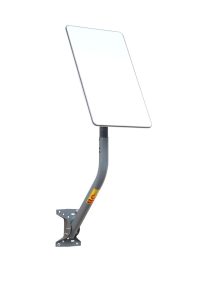Future of Satellites: Introduction
The focus keyword Future of Satellites is an exciting topic that has been gaining attention in recent years. The future of satellites is looking brighter than ever, with advancements in technology and innovations in space exploration. Satellites have been a crucial part of our daily lives, from providing communication services to enabling navigation and weather forecasting. As technology continues to evolve, we can expect to see even more innovative applications of satellite technology in the future.
Satellites have come a long way since the launch of the first artificial satellite, Sputnik, in 1957. Today, there are thousands of satellites orbiting the Earth, providing a wide range of services including telecommunications, navigation, weather forecasting, and Earth observation. The future of satellites is expected to be shaped by advancements in technology, including the development of smaller, more efficient satellites, and the use of new materials and propulsion systems.
Advancements in Satellite Technology
One of the most significant advancements in satellite technology is the development of smaller, more efficient satellites. These satellites, known as smallsats or CubeSats, are typically smaller than a shoebox and weigh less than 10 pounds. Despite their small size, they are capable of performing a wide range of tasks, from providing communication services to conducting scientific experiments. The use of smallsats is expected to increase in the future, as they offer a number of advantages over traditional satellites, including lower costs and increased flexibility.
Another area of advancement in satellite technology is the use of new materials and propulsion systems. For example, some satellites are now using advanced materials such as carbon fiber and nanomaterials, which offer improved strength and durability. Additionally, new propulsion systems such as ion engines and Hall effect thrusters are being developed, which provide more efficient and longer-lasting propulsion.
Innovations in Space Exploration
The future of satellites is also closely tied to innovations in space exploration. As space agencies and private companies continue to push the boundaries of space travel, we can expect to see new and innovative applications of satellite technology. For example, satellites are expected to play a crucial role in the development of lunar and Mars missions, providing communication services and navigation data to astronauts.
Additionally, the use of satellites in space exploration is expected to increase, with the development of new satellite-based technologies such as satellite-based propulsion systems and satellite-based life support systems. These technologies will enable spacecraft to travel farther and longer, and will provide the necessary infrastructure for sustained human presence in space.
Conclusion
In conclusion, the future of satellites is looking brighter than ever, with advancements in technology and innovations in space exploration. From improved communications to enhanced navigation, satellites are set to play an even more crucial role in our daily lives. As technology continues to evolve, we can expect to see new and innovative applications of satellite technology, from the development of smaller, more efficient satellites to the use of new materials and propulsion systems.



